As seen on Loomia's Medium here.
The Tech in #Techstyle
by Meisha Brooks, Product at The Crated
Fashion has always been intertwined with technology. From the loom to the Singer sewing machine, fashion has evolved with technology while paying homage to craftsmanship. It is in the duality of ready-to-wear and couture in which this idea manifests itself. Therefore, it is no surprise that new engineering processes have entered into fashion. Fashion is about re-invention and purposeful design whether literally like a space suit or as an expression of a designer’s view of how we should pass through this world.
Currently showing at the Museum of Fine Arts Boston is the relevantly named #techstyle exhibit. During my short trip back to my hometown of Boston, I was able to fit in the exhibit right before my return to NYC. The following pieces are a few that stood out and what they mean for the future of wearable tech.
Digital Printing
What I love most about the advancement of technology and what makes it forever exciting is that with every new development, every advancement, we are able to create one more object that previously could only possibly exist within the confines of our imagination. By combining new technologies and old techniques you can surprisingly create the unbelievable with relative ease. Literal drawings can be brought to life.
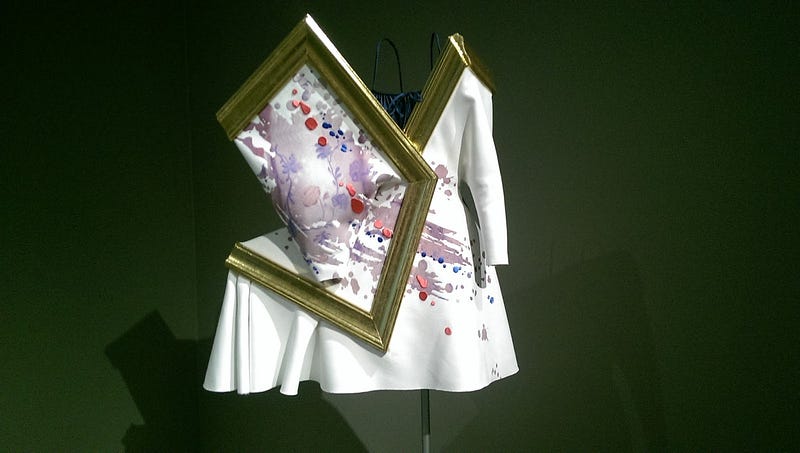
Victor & Rolf Haute Couture Wearable Art, Autumn/Winter 2015 “Poetry becomes reality, morphing back into fantasy”
Victor & Rolf’s AW 15 collection utilizes two developments, digital printing and laser cutting. The pictures dress consists of cotton and rayon plain weave (crepe) bonded to linen plain weave, “appliquéd” with laser-cut polyester weft-patterned jacquard and silk satin, embroidered with rayon; wood frame faced with digitally printed linen and silver-tone film; cotton and polyester twill (denim) underdress
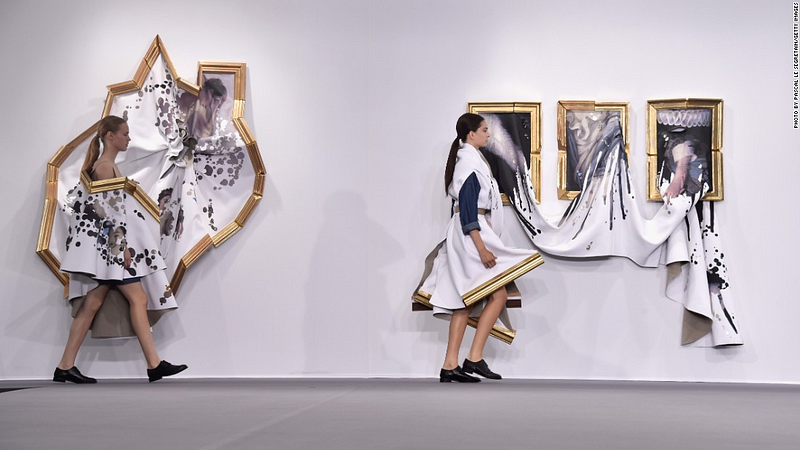
The collection is transformative in that it moves from framed pieces for the wall into dresses. The layering of technologies is what enables the dresses to seamlessly blend in with the framed structures and have a realistic appearance, melding high-tech production with handcraft.
Quorum 54 dress by Tatiana Tejedor + Tal Danino, Cotton and linen plain weave, printed and painted.
The worlds of fashion and science are not mutually exclusive. Both center around the human experience and finding ways to enhance it.
The Quorum 54 dress, a collaboration between Colombian fashion designer Tatiana Tejedor and MIT biomedical engineering researcher Tal Danino, is exactly this. It is a marriage of science and beauty, functioning as a tool and object of admiration. The dress’ fabric was digitally printed with reactive dyes which when held under black light show a dress which under normal light depicts interactions of cancer cells and cancer-fighting synthetic bacteria, to be cancer free — a powerful statement on the vision of research and a hopeful future for the fight against cancer. The garment is elevated to communicate a message below the surface.
Digital printing has enabled unbelievably vibrant and intricate patterns to be laid on clothing. A pivotal collection in digital printing was Raf Simon’s Christian Dior Fall 2012 couture collection, printing the works of contemporary artist Sterling Ruby on gowns, creating a striking image.


Engineered Reptile Print dress 2015 Sally La Pointe digitally printed sequins polyester net embroidered with mylar sequins, silk satin underdress
In the Engineered Reptile Dress, Lapoint’s reptilian imagery is heat-transferred on sequence over a polyester net, a task which would be impossible by traditional dye application methods. Digital printing allowed expansion into unusual materials and textures.
Alexander McQueen, a genius of imagination with a remarkable ability to showcase it for an audience, is credited with pushing fashion into a new digital frontier live streaming his couture runway show making it an accessible piece of work. His digitally printed hybrid animal imagery enabled his pieces to evoke the futuristic environment that he wanted.
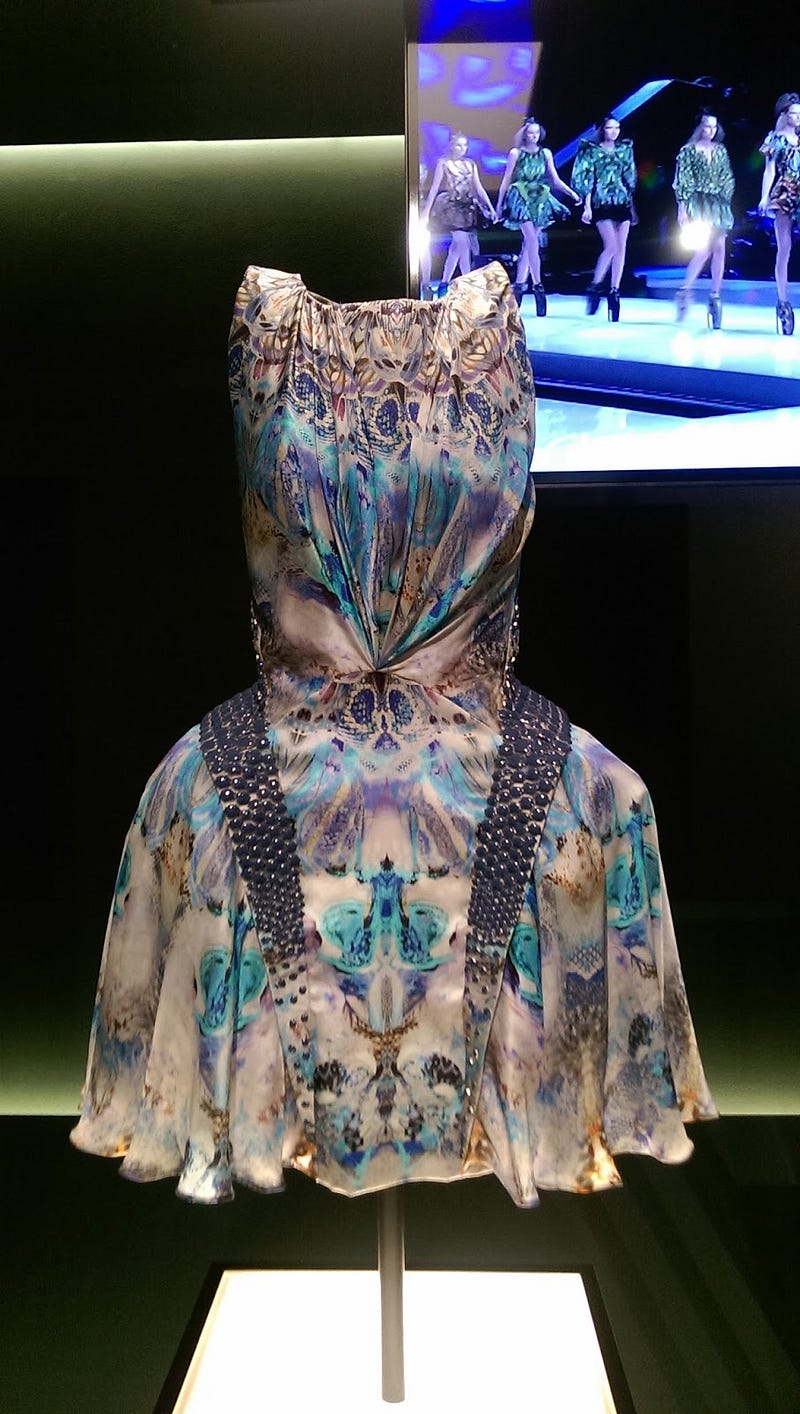
Dress, 2010 Alexander McQueen Silk plain weave, digitally printed, enamel paillettes
At The Crated, we’re working with companies likeArtifact Textiles to innovate with thoughtfulness.
What often accompanies technological advances is waste but being conscious of this reality leads to furthering the sustainability movement. Fashion like any industry can and does produce waste. From the discarded dyes and the chemicals to create them, to fabric patterns which waste material. All of this when you look at it in scale (consider the earth’s population of 7.125 billion clothed beings), the environmental impact of improper practices is undoubtedly significant.
Technology is not always used for negative ends. When in the right hands it can positively change an entire eco-system. Many designers are realizing this and choosing to use sustainable fabrics and dyes.
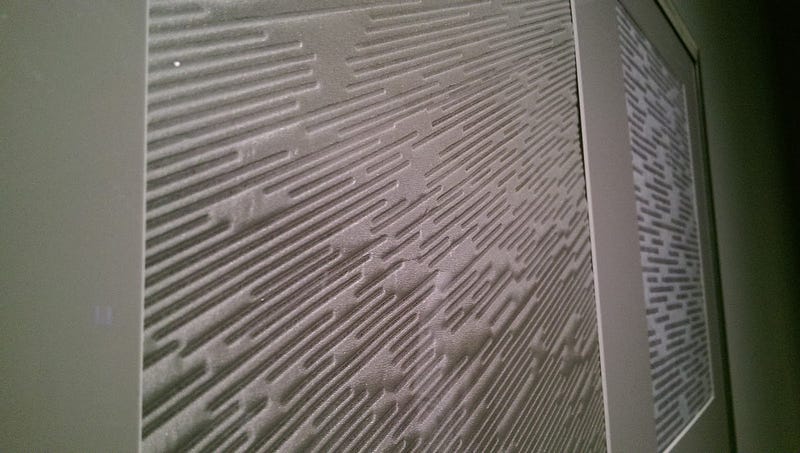
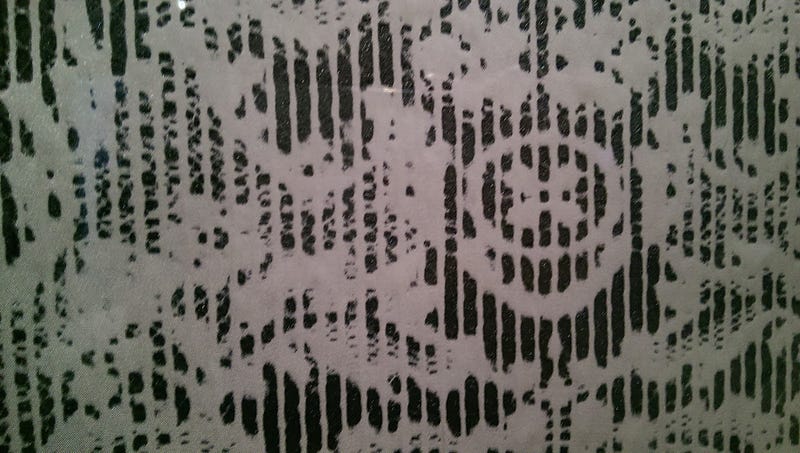
Six Laser Line 2D sample, 2016 — Kate Goldsworthy Recycled polyester, plain weave and non-woven polyester, laser patterned and bonded. Pictured are closeups of two of the samples.
Kate Goldsworthy created Six Laser 2D samples to show that sustainable processes can be done and with beautiful results.
Laser-welding (much like laser cutting) is used to create patterns, avoiding using chemicals used in industry traditional textile dyeing and finishing, which pollute the earth’s water supply through runoff (17–20% according to The World Bank). Implementing what Goldsworthy has developed throughout the industry would have an immense impact.
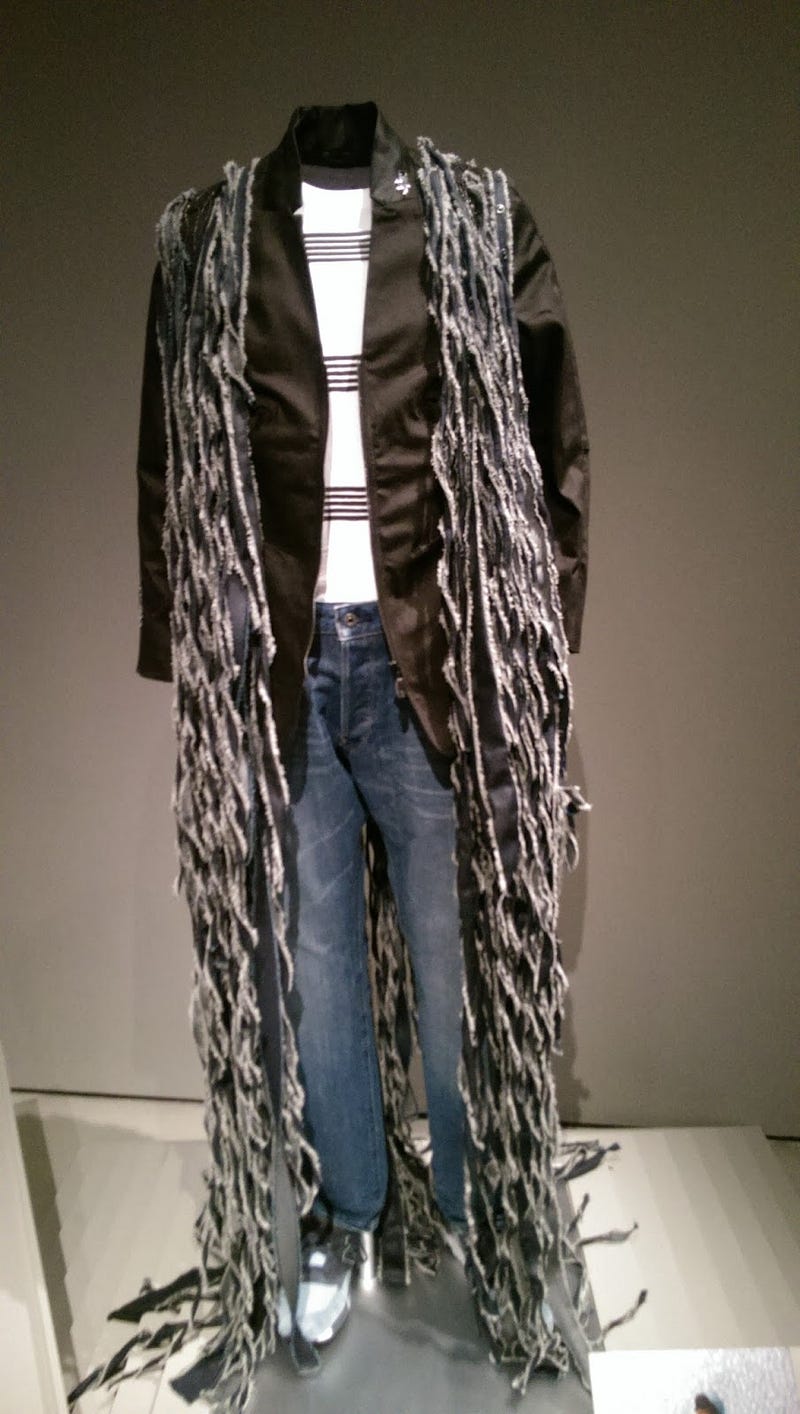
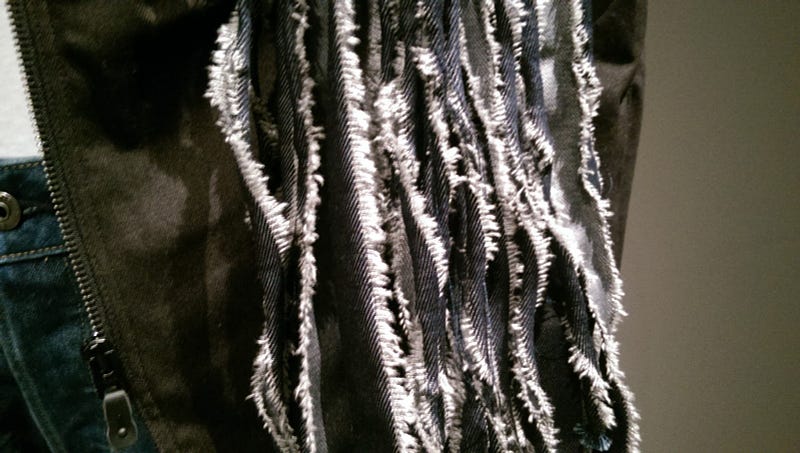
G-Star Raw for the Oceans ensemble 2015 Recycling vs Avoiding Waste Polyester (PET) yarn recycled from plastic and cotton; twill (denim)
As we develop our supply chain at The Crated, we are aiming to make our process as sustainable as possible by choosing sustainable fabrics such as hemp which use less water and don’t require such a high human labor cost like that of cotton — its production uses 2.6% of water supply), and non-toxic laminents.
To be able to mass recycle clothing would be incredible and allow even more freedom in terms of creativity for the environmentally-minded designer.
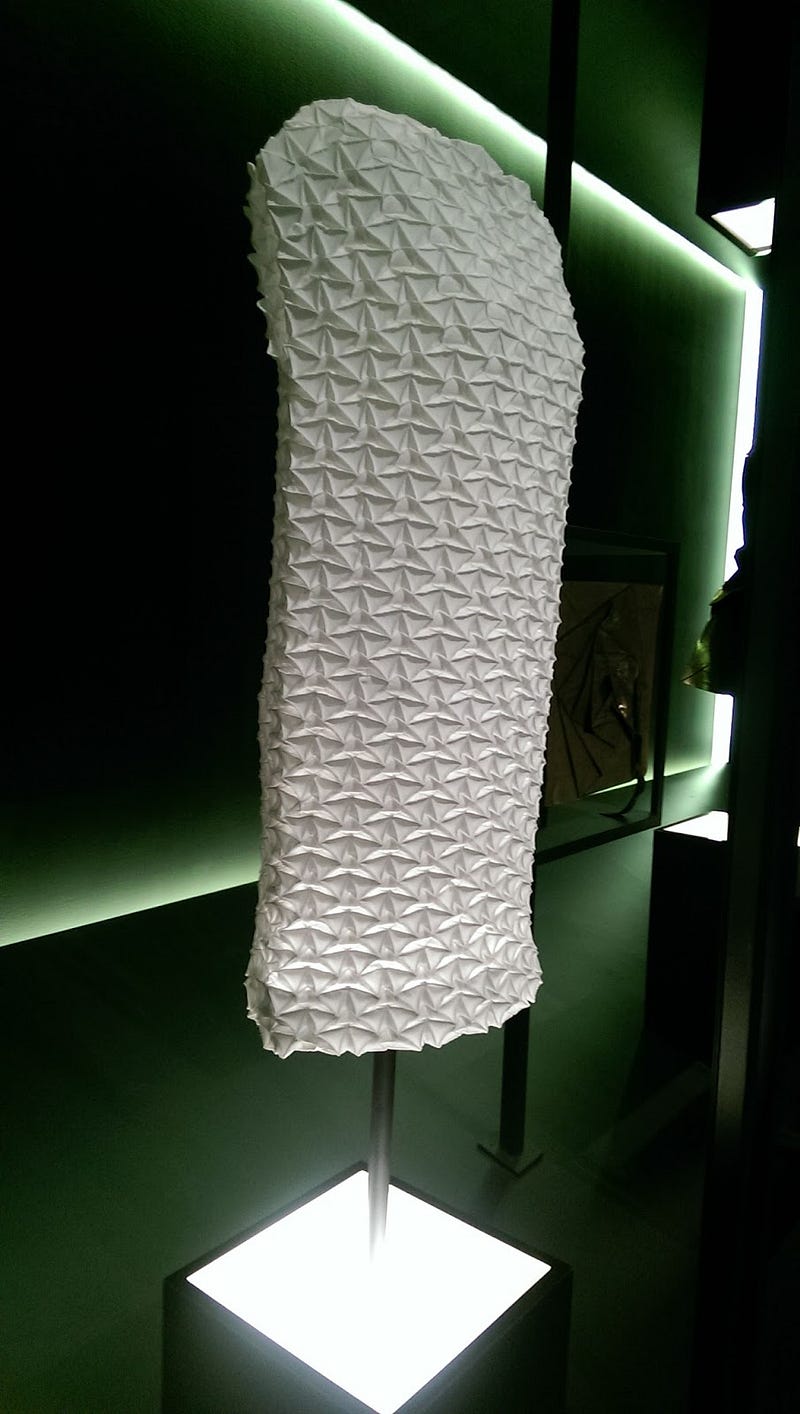
3D Steam Stretch Issey Miyake
Another designer who often breaks through construction boundaries challenging traditional methods of garment fabrication, is Japanese designer Issey Miyake. Using recycled PET polyester plain weave environmental with complex pleating cutting down on CO2 emissions his garments achieve a transformative nature like the technology trend of modularity.
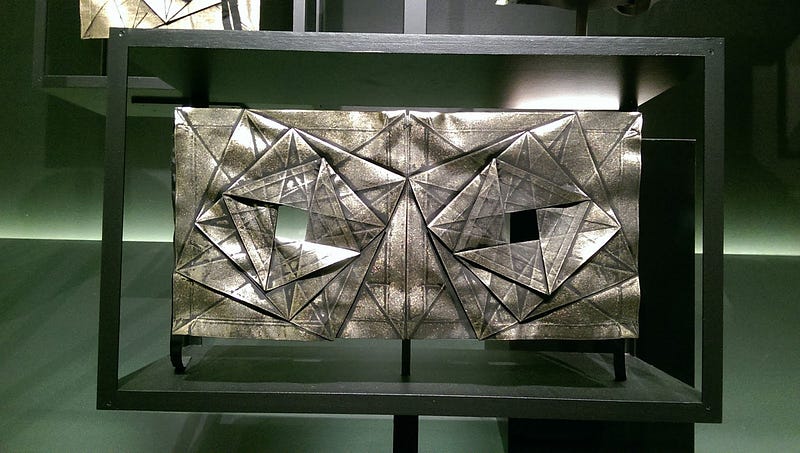


Miyake’s garments are forward thinking in their construction, in their geometry, and modular quality.
Light + LEDs + Functional Hardware
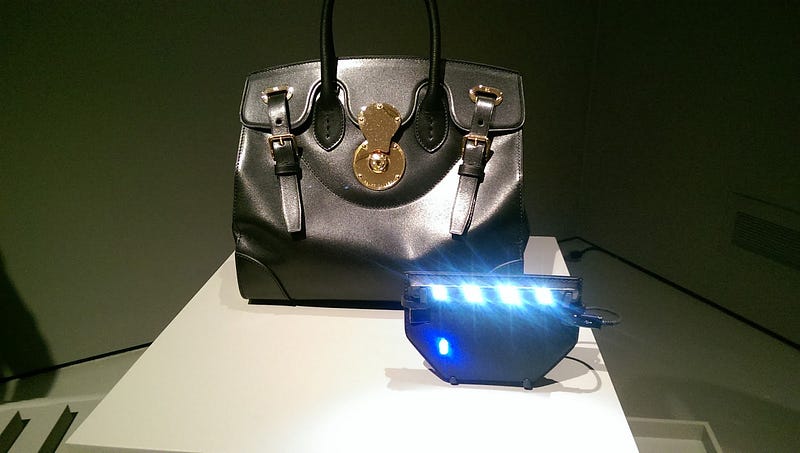
Ralph Lauren Ricky bag with light 2015 leather and rose gold+ L.F.W. Straeter
LEDs are one of the most energy saving, cost effective, safe, ways to bring light into the world (and your apparel). Ralph Lauren’s bag although a prototype and show piece is a perfect example of how we can imagine a consumer utilizes technology daily. They are probably the most accessible of the hardware to be incorporated into clothing. Simple feedback loops and interactions can make dramatic entrances and impressions.
An example of a classic fashion company making attempts to enter the fashion tech space is Ralph Lauren. They have previously developed a biometric shirt for the 2014 US Open, as well as a holographic fashion show — another way in which technology is being incorporated.
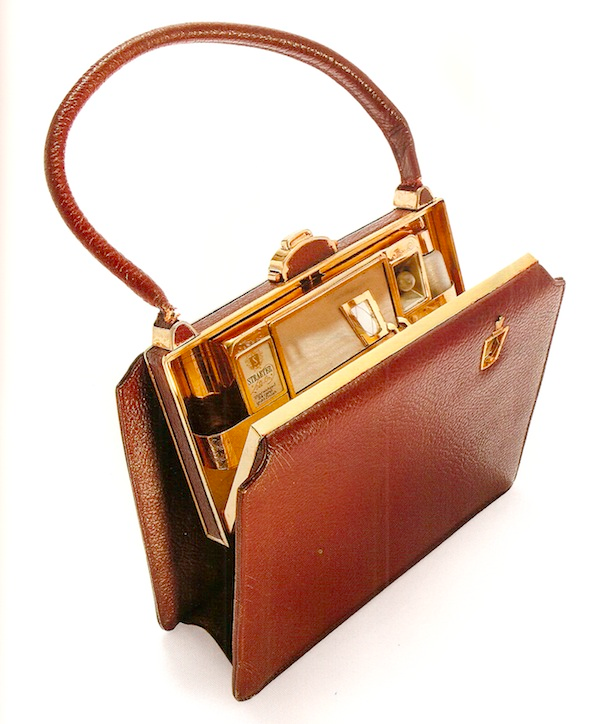
Image : Bags by Sigrid Ivo
The first bag with lights was created by Amsterdam-based designer L.F.W Straeter in 1956 called the Lite-On. He thought why not create a purse equipped with an interior light so that women could more easily find what they were looking for in poor lighting. Like an inventor, fashion designer or engineer he saw a problem and decided to design a purse to fix it. He just so happened to be ahead of his time incorporating electrical technology directly into a portable form factor.
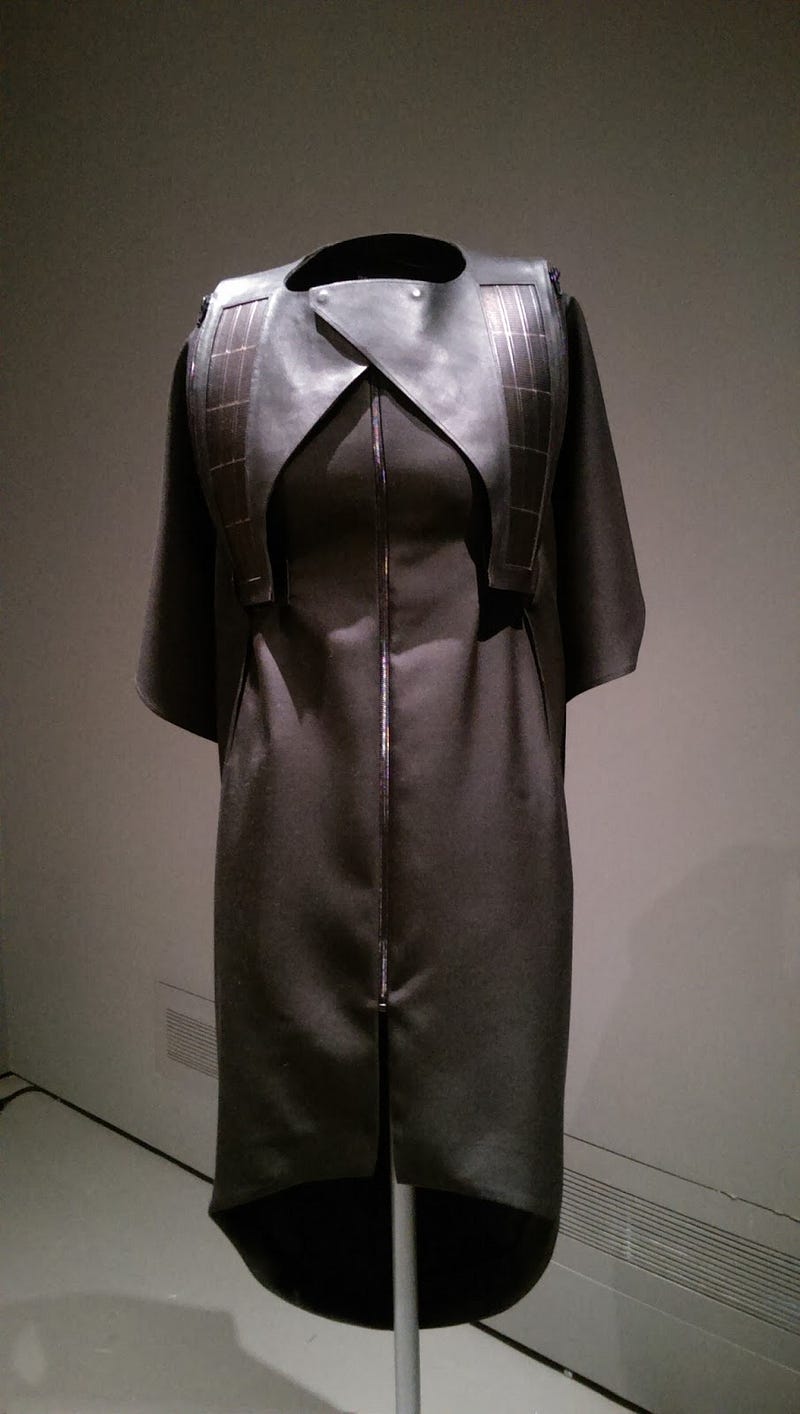
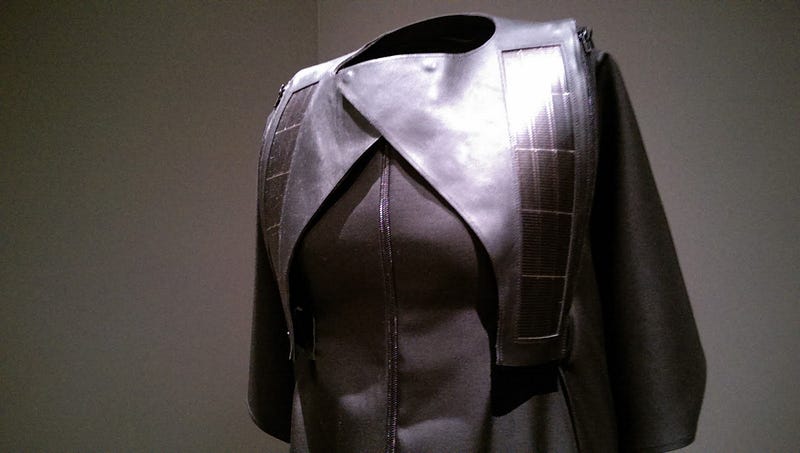
Solar Dress Pauline Van Dongen, Neoprene and leather with solar cells 2014
Function often comes before form but why not have both? Alternative sources of energy and kinetic clothing are a result of our lifestyles. We are in constant need of remaining plugged in. The most well-known implementations of electronics in apparel are often for beauty, but they can indeed serve a purpose.
I would dub Van Dongen a designer of the future in that her design philosophy from the very beginning encompasses technology. For the Solar dress she collaborated with Christiaan Holland and solar energy expert Gert Jan Jongerden. The dress uses 72 solar cells and can charge a phone in two hours.
Laser Cutting
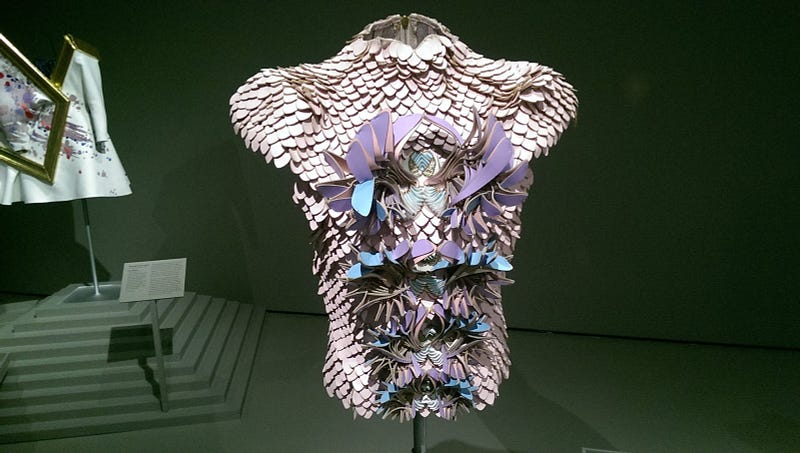
Bodice by Indian designer Manish Arora laser-cut leather, embroidered with beads and sequins
Laser cutting allows for the most intricate patterns to be cut out of delicate fabrics such as lace to more robust items such as acrylic. This bodice is a wonderful example of the power of the laser with its scale-like layers
Ensemble from hard Copy Collection 2014 (Nylon net appliquéd with laser-cut polyester twill, with silk plain weave (organza), polyester satin, cotton braid, and glass beads) is a stunning example of laser cutting and its power to enable unique architecture in garments.
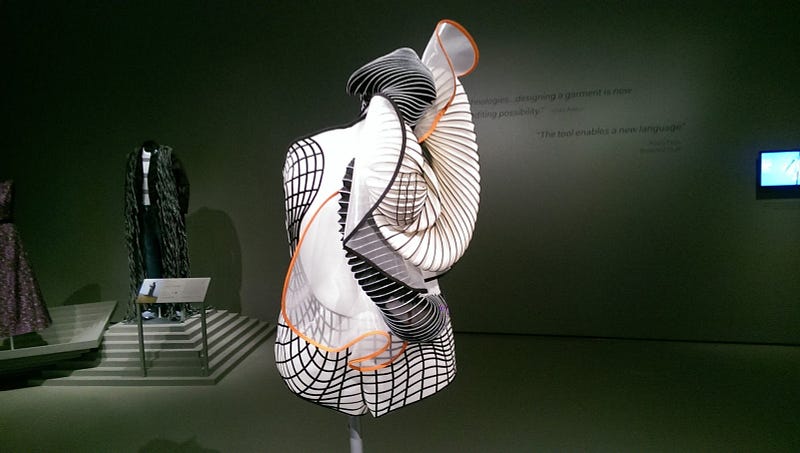
Ensemble Noa Raviv
The designer initially created her garment in a CAD program. This allowed her to create her full vision and work out kinks before execution of the garment even started. She was able to create her garment by breaking it down among three processes laser cutting, traditional dressmaking techniques, and 3D printing.
3D Printing
As 3D printing technology expands what people choose to create on them expands. When 3D printing first came out the idea of combining different materials and even different colors was unimaginable. Now, this is becoming more a norm where you have hard and soft barriers being printed. At The Crated we use additive manufacturing methods in our flexible circuit designs.
Going off of ensemble 3D printing with advancements such as Carbon3D moving into developing ways to make mass manufacturing, large scale, durable 3D printed parts possible, and at an accelerated rate which make it closer to the speed achieved in current traditional manufacturing methods for for instance an airplane’s wing. You are able to with a lot more accuracy design and replicate an object taking into account considering the settings on the printer are correct and the integrity of the material walls is intact.
3D printing although still greatly in the hobbyist’s realm is wonderful for prototyping and as advances come durability will accompany it.
The applications are vast, ranging from medical, manufacturing, and quick mold design, to prosthetics from computer generated imagery.
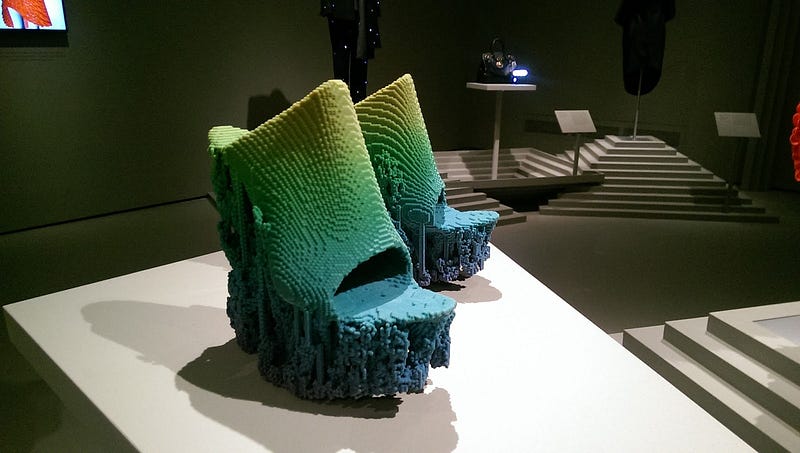
Molecule Shoes 2015 Francis Bitoni
Polyester filament 3D-printed with Stratasys Objet500 Connex3 multicolour. Additive manufacturing, method we use with some of our flexible circuit design.
Bitoni altered manufacturing in a unique way. While traditionally you want replication to occur in a production run with one object of the same type being identical to the other, Bitoni wanted variation in each of his shoes. IN a way installing the uniqueness from handcrafted work the beautiful imperfections and variations in a computer-created object. Running the prints off of an algorithm which would had “real-life” variation to each shoe. One of the arguments against mass manufacturing of objects in support of an artisan movement is the human touch and that you get an object completely identical to each other. We often attribute value to uniqueness and where is the uniqueness is identicalness?
Bitoni straddles these two worlds beautifully.

threeASFOUR Harmonograph dress — making the impossible possible
Another 3D printed wonder in the exhibit. Created the Biomimicry Collection Fall/Winter 2016 by the New York based design team was able to create a dress which required so much precession to execute that it would not have been possible being created by hand . The dress employs a very recently developed printing material nano-enhanced elastomeric material praised for its flexibility and durability. The dress replicates aspects of natural spatial geometries and cellular growth patterns.
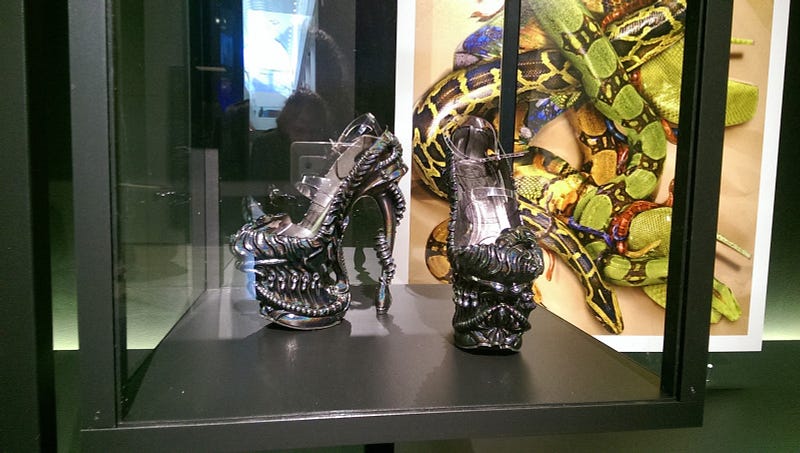
Alien Shoe Alexander McQueen Spring/Summer 2010 Plato’s Atlantis
Alexander McQueen. The infamous Alien shoe made possible with 3D printed resin commentary on the earth’s reliance on oil the oil slick color of the shoe and dresses made of petrol-printed organza.
Reactive Dyes
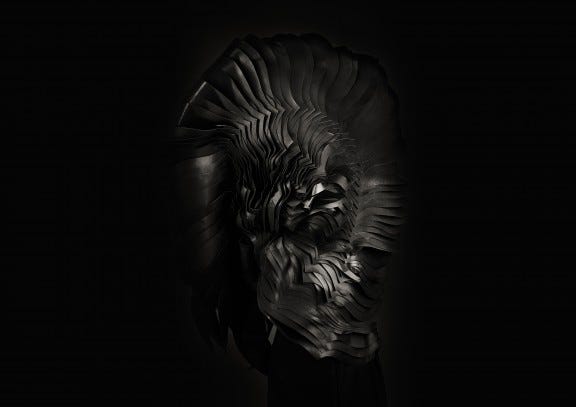

The Bird and The Beatle (from THEUNSEEN Collection archive)
Leather with wind and heat reactive inks from the AIR Collection 2015 by THEUNSEEN
The Bird and The Beatle is the most exhilarating piece for me in its almost hauntingly life-giving way. The Bird and The Beatle gives off a magical other-worldly feel. The inks respond to touch, heat, light, air flow, and pressure reverting to black in the absence of a trigger. According to Bowker, “it’s about changing the way people see material and see product…We just want to show people date and the stuff going on around us that we don’t normally see”. It is as the curator says an amalgams of chemistry, artistry, and design, they are wearable technology’s magical side.
Reactive inks like our Photochromia collaboration with PAOM, a collection of garments which change with exposure to UV light, can help show that wearable technology is not just circuited but also material science is an integral part.
Robotics

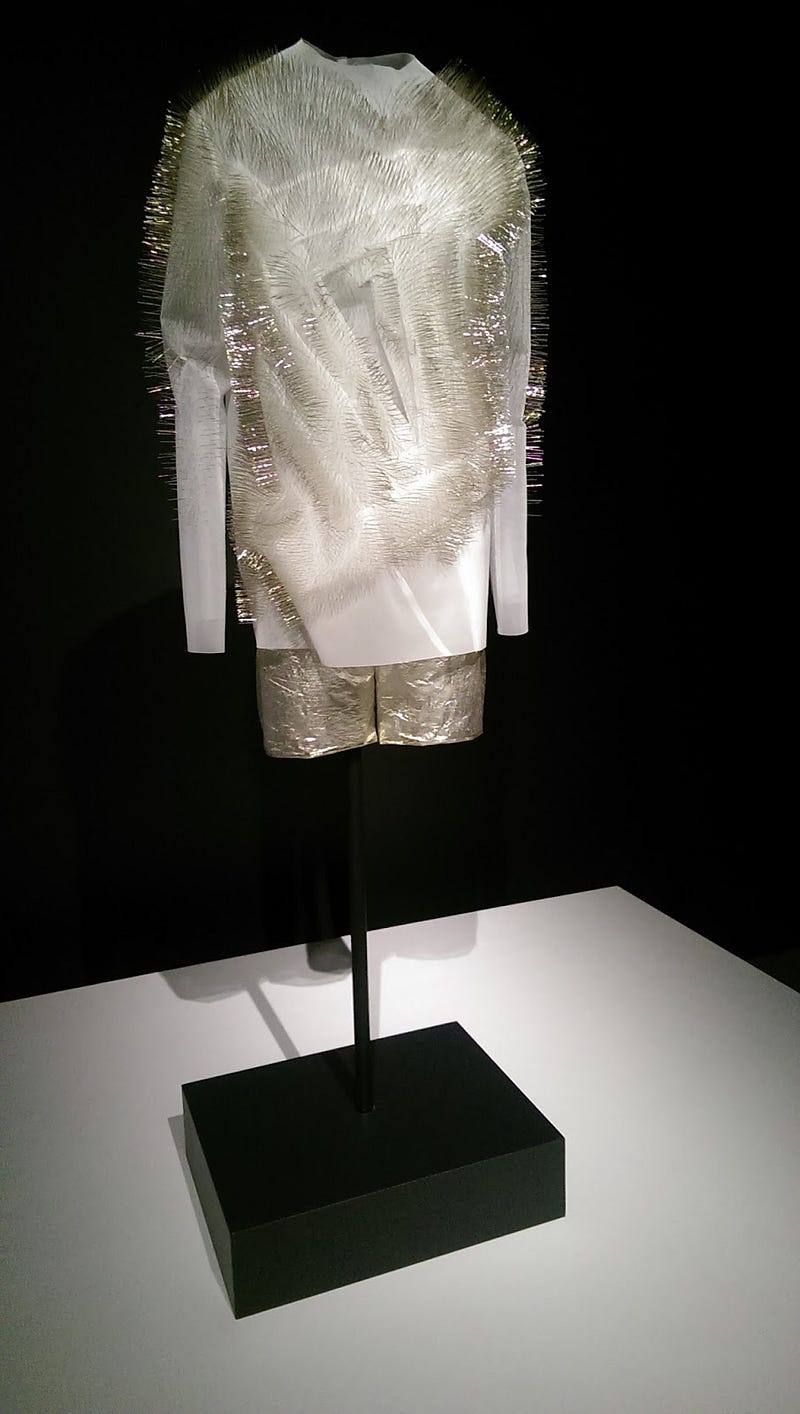
Technology and apparel is a world stage. It is not simply powered by one country’s fashion industry. It is a movement that we are so excited to be a part of. The applications are so vast that we are getting closer and closer to the idea of imagination being the ceiling, that there is no limit for creation. It’s an exciting time and you never know what you can invent unless you try. It doesn’t matter if you’re a designer, an engineer or a combination of the two.
What does this all mean for the average consumer of quick fashion? You have events like the DeScien fashion show, hosted by MIT’s Media lab to foster collaboration between scientists and fashion designers, popping up in more and more places and it’s only a matter of time until collaborations like those in #techstyle are no longer novel. We should see wearable technology and circuited textiles more frequently. In the not so distant future enhanced clothing will be in every aspect of society. Everyone has a hand in this future. So go out there and create!
The #techstyle exhibit runs at the Boston Museum of Fine Arts until July 2016.